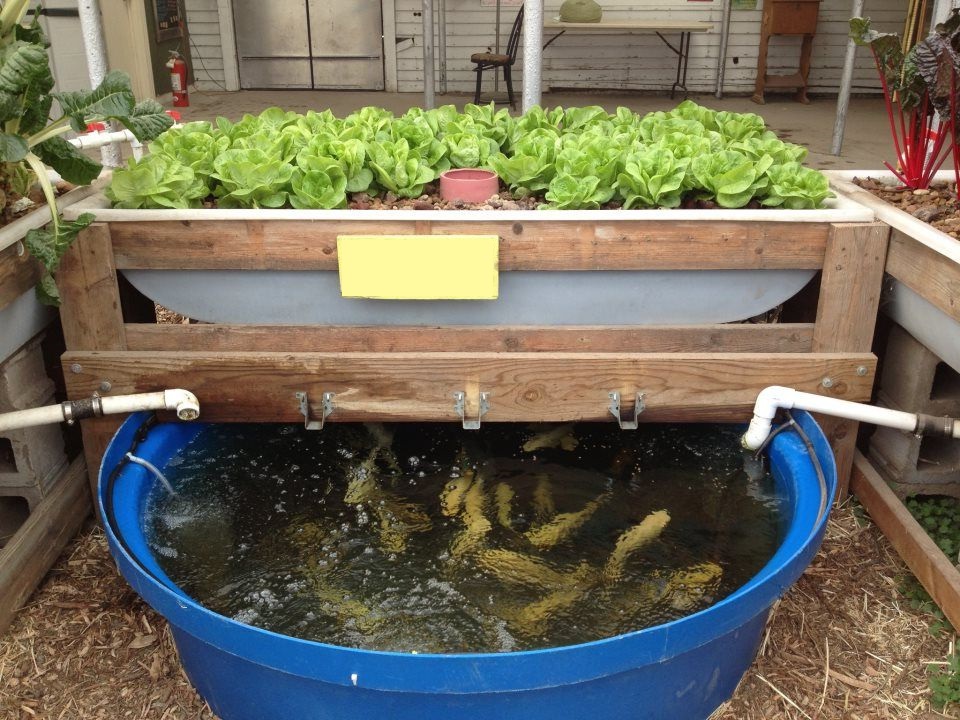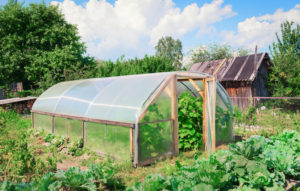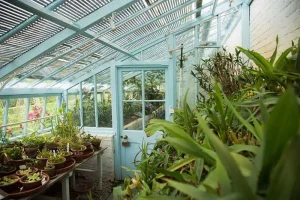Growing your own fish food using aquaponic systems is a revolutionary way to produce healthy and sustainable meals for your aquatic pets.
By leveraging the symbiotic relationship between plants and fish, you can create a self-sufficient ecosystem that eliminates waste and maximizes resource utilization.
With minimal space requirements and a relatively low investment, setting up an aquaponics system can be a game-changer for any fish enthusiast or small-scale farmer looking to enhance the nutritional value of their diet.
Whether you’re looking to supplement your existing fish food supply or transition entirely to home-grown ingredients, this guide will provide actionable information on how to set up and maintain a successful aquaponics system for growing your own fish food.
Choose the right fish
Not all fish are suitable for aquaponic systems. Choose fish that are hardy and can thrive in a recirculating aquaculture system. Some good options include tilapia, catfish, and goldfish.
Tilapia, catfish, and goldfish are all excellent options that can tolerate the conditions found in an aquaponic system.
Tilapia, for instance, are warm-water fish that can tolerate a wide range of water temperatures and are relatively easy to care for.
They are also an excellent source of protein and can be bred to produce a continuous harvest.
Catfish, on the other hand, are bottom-dwellers that are well-suited to the stable water conditions found in aquaponic systems.
They are also tolerant of a wide range of water temperatures and can be bred for a high-yielding harvest.
Goldfish, while not as commonly thought of for aquaponics, are also a suitable choice.
They are hardy and can tolerate the cooler water temperatures found in an aquaponic system.
However, they do require more frequent water changes than tilapia or catfish.
Regardless of the fish species chosen, it’s important to ensure that they are healthy and well-cared for to maintain the overall health and success of the aquaponic system.
Build or buy a system
You can either build your own aquaponic system or purchase a pre-made one. If you choose to build your own, make sure to research and follow proper designs and materials to ensure the system functions properly.
Building or purchasing an aquaponic system are two different paths you can take to start your aquaponic journey.
If you decide to build your own system, it’s essential to conduct thorough research and use proper materials and designs to ensure that the system functions effectively and efficiently.
This involves selecting the right type of fish and plants, using appropriate plumbing and pumping systems, and maintaining proper water quality and temperature.
You’ll need to consider the space and resources required for the system, such as lighting, heating, and energy supply.
On the other hand, purchasing a pre-made aquaponic system can save time and effort in the initial set-up process.
However, it’s important to research and choose a reputable supplier to ensure that the system is of high quality and will function well over the long-term.
You’ll need to consider the cost and feasibility of maintenance and expansion of the system.
Regardless of which path you choose, it’s important to have a clear understanding of the aquaponic process, including fish and plant care, water quality management, and the integration of all components into a functioning system.
By doing so, you can ensure a successful and rewarding aquaponic experience.
Cycle the system
Before adding fish and plants, allow the system to cycle to establish a colony of beneficial bacteria that will break down waste and recycle nutrients. This can take several weeks, but it’s essential for the long-term health of the system.
Before you introduce fish and plants to your aquaponics system, it’s essential to allow the system to cycle to establish a colony of beneficial bacteria.
This process can take several weeks, but it’s important for the long-term health of your system.
During this time, the bacteria will break down waste products and recycle nutrients, creating a balanced ecosystem that will support the growth of healthy fish and plants.
If you skip this step and add fish and plants too soon, you may experience a ‘new tank syndrome,’ where the system crashes due to an imbalance of nutrients and waste.
By allowing the system to cycle, you’ll establish a strong foundation for your aquaponics system, ensuring that it thrives for years to come.
To ensure the long-term health of your aquaponics system, cycling the system before adding fish and plants is essential.
This process takes several weeks, but it’s important for creating a balanced ecosystem.
By allowing the system to cycle, you’ll cultivate a colony of beneficial bacteria that will break down waste and recycle nutrients, setting the stage for healthy fish and plant growth.
Skipping this step can lead to a ‘new tank syndrome,’ where the system crashes due to an imbalance of nutrients and waste.
So, take the time to let your system cycle, and enjoy a thriving aquaponics system for years to come.
Add plants
Once the system is cycled, you can add plants such as lettuce, spinach, or herbs. These plants will help to purify the water and provide food for your fish.
Add plants such as lettuce, spinach, or herbs to your aquarium once the system is cycled.
These plants will not only purify the water by consuming excess nutrients and increasing oxygen levels, but they will also provide a nutritious food source for your fish.
Choose hardy plants like anacharis or hornwort that can tolerate a range of water conditions and are easy to maintain.
Incorporate plants gradually to avoid sudden changes in water parameters, and place them in a location that receives adequate lighting for optimal growth.
Monitor water quality
Regularly test the water for pH, ammonia, nitrite, and nitrate levels. Adjust the system as needed to maintain optimal water quality.
Adjust the system as needed to maintain optimal water quality.
To ensure the health and well-being of your aquatic animals, it is essential to regularly monitor the water quality in your aquarium or pond.
This involves testing the water for pH, ammonia, nitrite, and nitrate levels, as these parameters can affect the livestock’s health and vitality.
PH is a measure of the water’s acidity or basicity, and it should be maintained within a range of 6.5 to 8.5 for most aquatic species.
Ammonia is a toxic compound that can be harmful to fish and other aquatic animals, so it is important to keep ammonia levels as close to zero as possible.
Nitrite is also toxic and can cause illness and death, so it should be eliminated from the water as soon as possible.
Nitrate is a less toxic form of nitrogen that is present in the water, but it can still be harmful in high concentrations.
Therefore, it is important to maintain nitrate levels below 40 ppm.
To monitor water quality and maintain optimal conditions, you can use a variety of testing kits that are available at pet stores or online.
These kits typically contain test strips or color-changing solutions that allow you to quickly and easily measure the water’s pH, ammonia, nitrite, and nitrate levels.
Based on the results of your tests, you can make adjustments to the system as needed to maintain optimal water quality.
For example, if the pH is too high or too low, you can adjust the water’s acidity by adding a buffering solution or an acid.
Similarly, if nitrite levels are too high, you can add a nitrite remover to the system to eliminate it.
In addition to testing kits, there are other tools that can help you monitor water quality.
For example, you can use a hydrometer to measure the specific gravity of the water, which can help you determine the water’s pH and acidity levels.
You can also use a thermometer to measure the water’s temperature, which can affect the health and well-being of your fish.
By regularly monitoring the water’s pH, ammonia, nitrite, and nitrate levels, and making adjustments as needed, you can help ensure that your fish have a healthy and safe environment in which to thrive.]]] Maintaining optimal water quality is important for the health and well-being of your fish.
One of the most important aspects of water quality is monitoring the levels of pH, ammonia, nitrite, and nitrate.
Regularly testing the water for these parameters will help you identify any issues before they become major problems.
To monitor water quality, you can use a variety of testing kits that are specifically designed for this purpose.
These kits are easy to use and provide accurate results.
For example, you can use a pH test kit to measure the water’s pH level, which should be maintained between 6.5 and 8.0.
Similarly, you can use an ammonia test kit to measure the water’s ammonia level, which should be kept below 1.0 ppm.
In addition to testing kits, there are other tools that can help you monitor water quality.
For example, you can use a hydrometer to measure the specific gravity of the water, which can help you determine the water’s pH and acidity levels.
You can also use a thermometer to measure the water’s temperature, which can affect the health and well-being of your fish.
By regularly monitoring water quality and making adjustments as needed, you can help ensure the health and well-being of your fish and keep your aquarium running smoothly.]
Regularly monitoring water quality is important to maintaining a healthy and thriving aquarium.
Testing kits are readily available and easy to use to measure key parameters such as pH, ammonia, nitrite, and nitrate levels.
The pH level should be maintained between 6.5 and 8.0, while ammonia levels should be kept below 1.0 ppm.
Hydrometers can be used to measure specific gravity, which can provide insight into the water’s pH and acidity levels.
Thermometers can also be used to measure temperature, which can impact the health and well-being of your fish.
By regularly testing and adjusting water quality parameters, you can ensure optimal conditions for your fish to thrive and maintain the overall health and functionality of your aquarium.
Feed your fish
Provide your fish with a balanced diet of high-quality commercial food or supplement with live or frozen foods. Avoid overfeeding, as this can lead to water quality issues.
When it comes to feeding your fish, providing them with a balanced diet is important for their overall health and well-being.
High-quality commercial food is a great option, but you can also supplement with live or frozen foods to offer a variety of nutrients.
However, it’s important to avoid overfeeding, as this can lead to water quality issues and create an unhealthy environment for your fish.
To ensure a balanced diet, you should choose a commercial food that is formulated specifically for your fish’s species and size.
This will help ensure that they are getting the proper nutrients and vitamins they need to thrive.
You can supplement with live or frozen foods, such as brine shrimp or bloodworms, to provide a varied diet.
It’s important to avoid overfeeding, as this can lead to excessive waste and unhealthy water conditions.
Instead, feed your fish only what they can consume within a few minutes, and avoid adding food that is not eaten within a minute or two.
This will help prevent excessive waste and keep your fish healthy and happy.
By providing a balanced diet and avoiding overfeeding, you can help ensure the long-term health and well-being of your fish.
Harvest your crops
As your plants grow, you can begin to harvest leaves, stems, or roots for use in your aquaponic system. This will help to maintain a closed-loop system and ensure that all components are working together effectively.
Harvesting your crops is an essential step in maintaining a closed-loop system in your aquaponic garden.
As your plants grow, you can begin to harvest leaves, stems, or roots for use in your system.
This not only helps to maintain a closed-loop system but also ensures that all components of your aquaponic garden are working together effectively.
For example, you can harvest leaves from your aquatic plants to use as fertilizer for your terrestrial plants.
The nutrient-rich water from your aquatic system can also be used to irrigate your terrestrial plants, providing them with the necessary nutrients for healthy growth.
By harvesting your crops and incorporating them back into your system, you can create a self-sustaining ecosystem that minimizes waste and maximizes productivity.
Expand and improve
As you gain experience with your aquaponic system, consider expanding and improving it. This might include adding more fish, plants, or incorporating other elements like composting or vermicomposting. With time and experimentation, you can refine your system to achieve optimal production and efficiency.
As you gain experience with your aquaponic system, consider expanding and improving it to achieve optimal production and efficiency.
You can do this by adding more fish, plants, or incorporating other elements like composting or vermicomposting.
For example, you can experiment with different types of fish and plants to find the ideal combination that thrives in your system.
You can also explore adding a composting or vermicomposting component to your system, which can help to further cycle nutrients and improve soil health.
By continuously experimenting and refining your system, you can optimize its performance and achieve higher yields of healthy, nutritious produce and protein.
You can consider integrating rainwater harvesting or gray water systems to supplement your aquaponic system’s water needs.
This can help to reduce your system’s reliance on municipal water supplies and decrease your overall water usage.
Moreover, you can explore the use of renewable energy sources, such as solar or wind power, to power your system’s pumps, filters, and other equipment.
By taking these steps, you can create a more sustainable and self-sufficient aquaponic system that not only produces healthy food and protein but also minimizes its environmental impact.
Want More? Dive Deeper Here!
Hey there! If you’re the type who loves going down the rabbit hole of information (like we do), you’re in the right spot. We’ve pulled together some cool reads and resources that dive a bit deeper into the stuff we chat about on our site. Whether you’re just killing time or super into the topic, these picks might just be what you’re looking for. Happy reading!
- Transform fish waste into food for an aquaponics garden | OSU Extension Service
- (PDF) Aquaponics
- Aquaponics: System Layout and Components | Land-Grant Press
- Full-Circle Food Chain Aquaponic Food Production – Center for Regenerative Agriculture and Resilient Systems – Chico State
- Aquaponics: Growing Fish and Food – UF/IFAS Extension Okaloosa County






